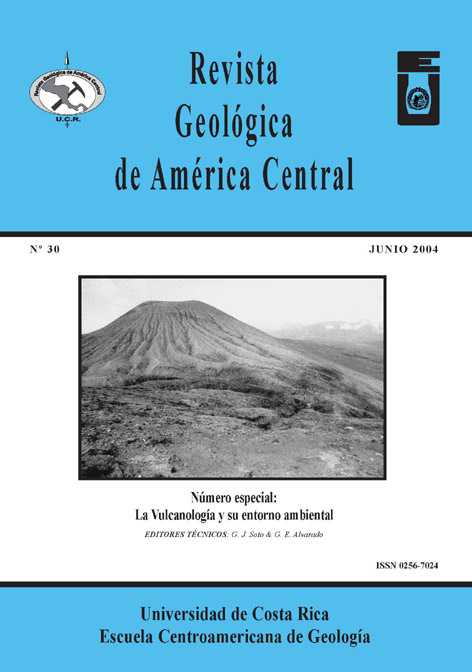Abstract
The first study of diffuse CO2 degassing was performed at Irazú volcano in 2001, with the goalto evaluate the origin and spatial distribution of CO2 efflux as well as the total output of CO2 to the atmosphe-re. Most of the study area showed background values of CO2 efflux, < 20 g m-2 d-1. The highest value was 316g m-2 d-1, which is relatively lower than the observed highest values for other volcanic systems within the samevolcano tectonic framework. The relatively high CO2 efflux values were located in the NE sector of the maincrater and in the northern side of Diego de la Haya crater. Carbon isotopic signatures showed a wide range ofδ13C-CO2 values from –65.3 to –19.8 ‰ suggesting a strong biogenic component. The estimated total output ofdiffuse CO2 degassing to the atmosphere from the study area was 44 t d-1. The studied fumarolic gases showedthat the 3He/4He ratio had a characteristic value for volcanoes related with subduction areas (6.6 RA), and that90% of the CO2 emitted comes from calcareous sediments incorporated during the subduction process.






